Another Simple Step to Good Eating and Good Health
It’s in microgreens, one step up from sprouts and one step down from baby greens. We've come to accept the baby-fication of our vegetables – baby spinach, baby lettuce, and baby squash prized for their tenderness and cute size have staked out territory in the produce section of many grocery stores today.
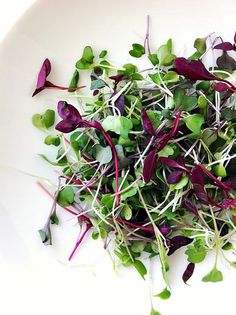
The advantages of these tiny leaves less than 14 days old are many, their proponents say. They make vibrantly hued garnishes to salads, sandwiches and soups. And whether they're spinach, pea, beet, or purple mustard, scientific research says microgreens are actually healthier than their larger sized adult versions.
Researchers at the U.S. Department of Agriculture and the University of Maryland report that the results of their various tests have knocked them over. They looked at four groups of vitamins and other phytochemicals – including vitamin C, vitamin E, and beta carotene — in 25 varieties of microgreens. They found that leaves from almost all of the microgreens had four to six times more nutrients than the mature leaves of the same plant. Red cabbage was highest in vitamin C, for instance, while green daikon radish microgreens had the most vitamin E.
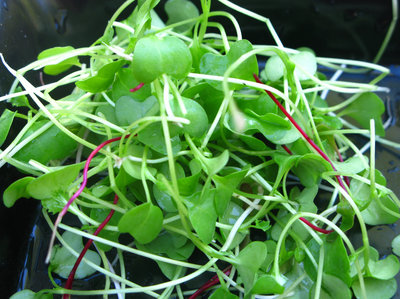
They can easily be confused with sprouts, but they're not the same thing. Sprouts are seeds germinated in water just long enough (usually 48 hours) to grow roots, a stem and pale, underdeveloped leaves.
Microgreens, on the other hand, germinate in soil or soil substitute, require sunlight for growth and are harvested when they're seven to 14 days old and one to three inches tall. Their flavor is much more intense than that of mature greens.
This distinction is important for food safety, since sprouts have been implicated in over 30 food-borne illness outbreaks (due to the bacteria Salmonella and E. coli). More and more research is showing eating sprouts isn’t the best idea.
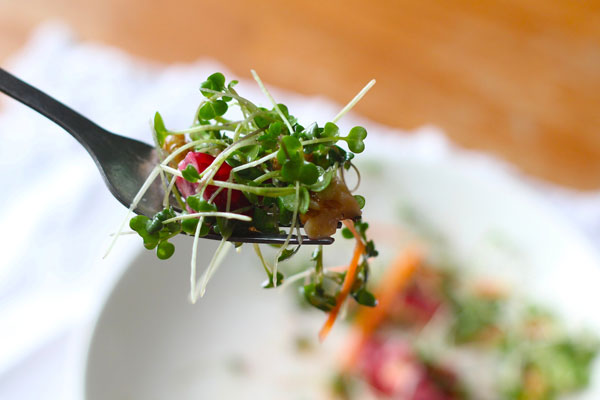
But scientists and nutritionists are clear on one thing: anything that gets more phytonutrients into people is a good thing, given that most Americans aren't eating enough fruits and vegetables. And microgreens are an excellent approach to this.
If you buy or grow microgreens, you've got to use them quickly since they have only a few days of shelf life. And researchers say that the plastic clamshell containers in which they're typically sold don't provide the right balance of oxygen and carbon dioxide for live greens to "breathe."
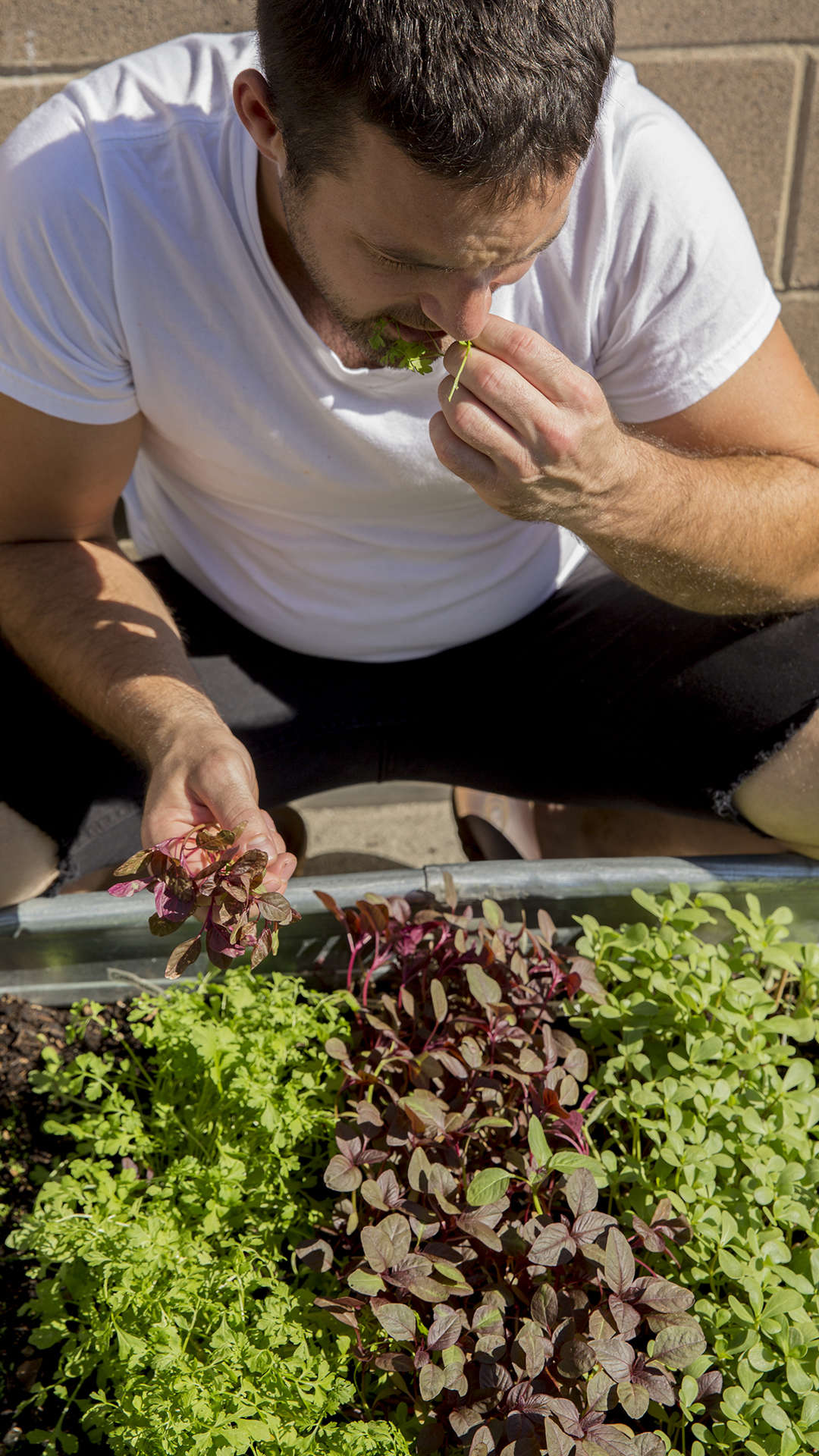
The best news is that microgreens are easy to grow at home on a sunny windowsill. More and more professional chefs are growing and using them in their gourmet recipes. The advice from them on growing your own is to be sure to pick and taste them every few days to determine when they’re the most flavorful and tender. Then keep notes so you know when your next crop will be ready for harvest.
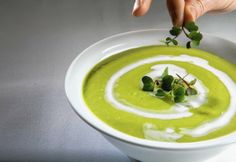
But whether you buy them or grow your own, avoid cooking them. And don’t be afraid to experiment with them. I throw them in my morning green smoothies, stuff them into my pita sandwiches, load them into salads, include them with my baked potato toppings, and sprinkle them over almost every stew, soup, and chowder. And they make the prettiest garnish next to our grilled burgers and steaks. The flavor punch they add to dishes is really beautiful.
Considering all the benefits and health factors, though, it’s not likely that microgreens will be pushing aside hearty, full-grown vegetables. They just aren't going to replace a big, leafy salad that has lots of fiber gives a good sense of satiety. But do get into the habit of throwing a big bunch of microgreens on anything. That's a terrific shot of vitamins—another simple step to good eating and good health.
Now to conclude, here’s a wonderful recipe using microgreens that has macro flavor! A summer salad that uses a few (what I would call) exotic ingredients, but hey, once in awhile it’s pleasant to step out of the norm and go a little wild. See what you think:
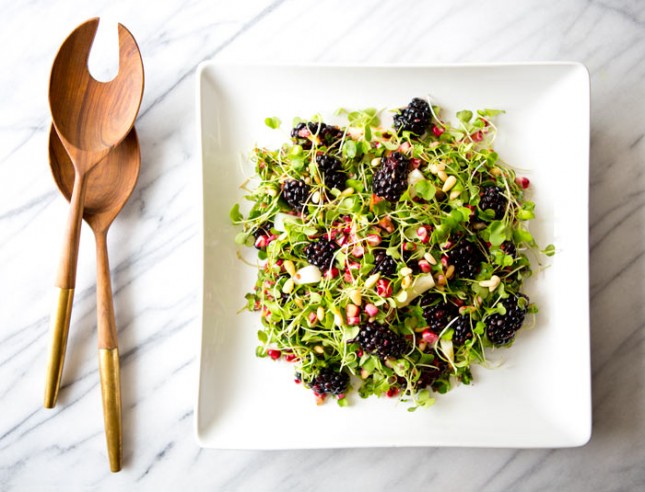
MICROGREEN SUMMER SALAD
3 1/2 cups microgreens
1 cup blackberries (ripe and sweet!)
2 tablespoons pine nuts
1 ear red corn, cut off the cob (any fresh sweet corn will work)
1/2 bunch white asparagus
2 tablespoons extra virgin olive oil
1 tablespoon red wine vinegar
1 clove of garlic, pressed
2 tablespoons chopped caper berries (stems removed)
1 1/2 tablespoons mint, finely chopped
sea salt, to taste
black pepper, to taste
- www.pinterest.com
- www.pbs.org
- www.flickr.com
- www.chefsteps.com
- www.brit.co
 Alice Osborne
Alice Osborne
Weekly Newsletter Contributor since 2006
Email the author! alice@dvo.com
